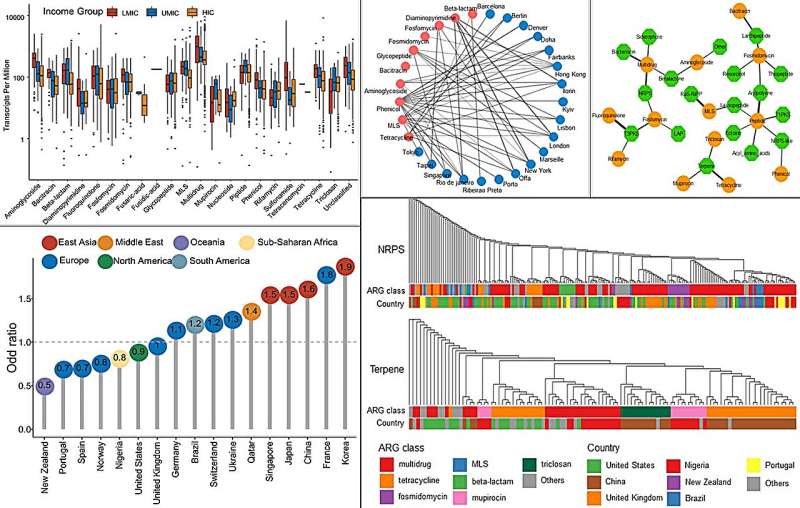This article has been reviewed according to Science X's editorial process and policies. Editors have highlighted the following attributes while ensuring the content's credibility:
fact-checked
peer-reviewed publication
trusted source
proofread
Landscape of global urban environmental resistome and its association with local socioeconomic and medical status

In a study published in the journal Science China Life Sciences, a research team used nearly 5,000 metagenomic samples collected from 60 cities around the world to conduct in-depth research on the antibiotic resistance of urban environmental microbes, providing a more comprehensive landscape of resistome in the global urban environment.
Through comparison, the researchers revealed that the antibiotic resistance of urban environmental microbes has significant regional specificity, and the resistance of microbes in the environment is significantly positively correlated with the consumption of antibiotics. In addition, the study found various local socio-economic development factors are closely related to the resistance of the urban environment, and economically underdeveloped areas face a more serious threat of microbial resistance.
By integrating information on antibiotic-resistant genes and mobile elements, this study also shows that there is the greatest risk of antibiotic-resistant gene transfer in the urban environment of East Asian countries.
Finally, based on the self-defense mechanism of microbes, the researchers focused on analyzing the secondary metabolite gene clusters containing resistance genes. The results show that the urban environment harbors a huge potential for the synthesis of new antibiotics, and the potential for antibiotic synthesis of microbes in different national environments also has regional specificity.
The results of this study not only enhance our understanding of urban environmental microbes but also provide us with new research directions in the monitoring of antibiotic resistance. In addition, the discovery of this study provides us with new perspectives and ideas for developing new antibiotics to deal with the threat of drug resistance of pathogenic microbes, which has important guiding significance for the future development of antibiotics.
This study was led by Prof. Shi Tieliu's team from East China Normal University and Prof. Christopher Mason's team from Weill Cornell Medical College.
More information: Jun Wu et al, Landscape of global urban environmental resistome and its association with local socioeconomic and medical status, Science China Life Sciences (2024). DOI: 10.1007/s11427-023-2504-1





















